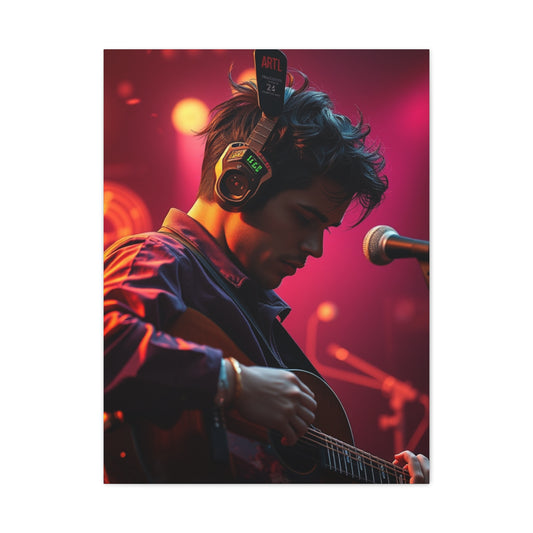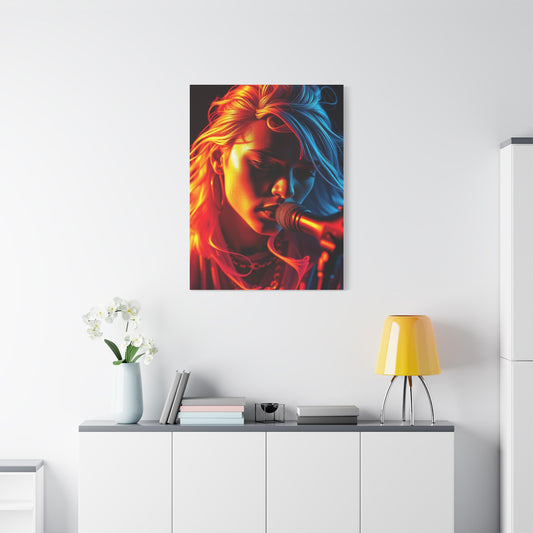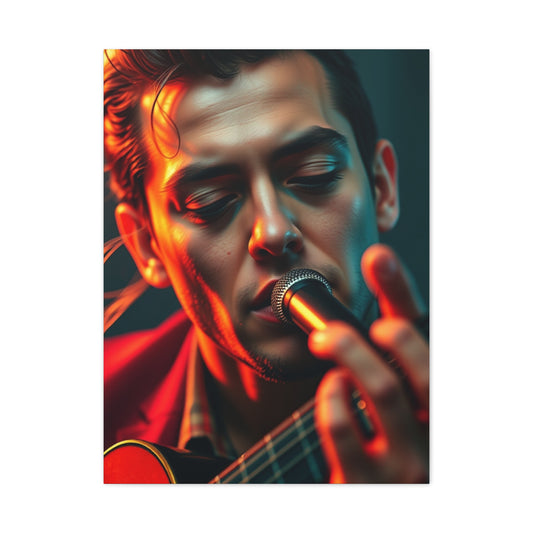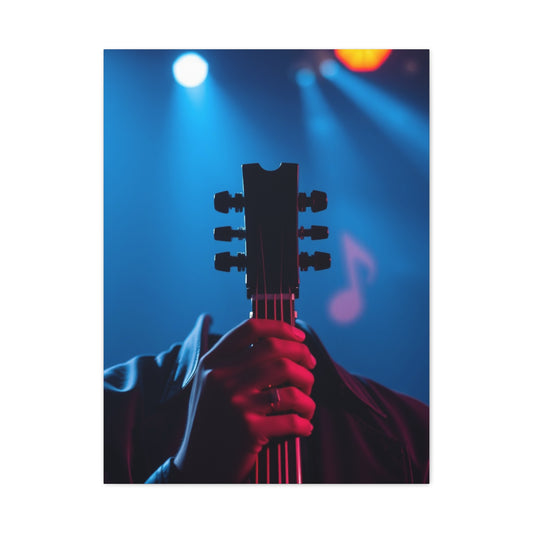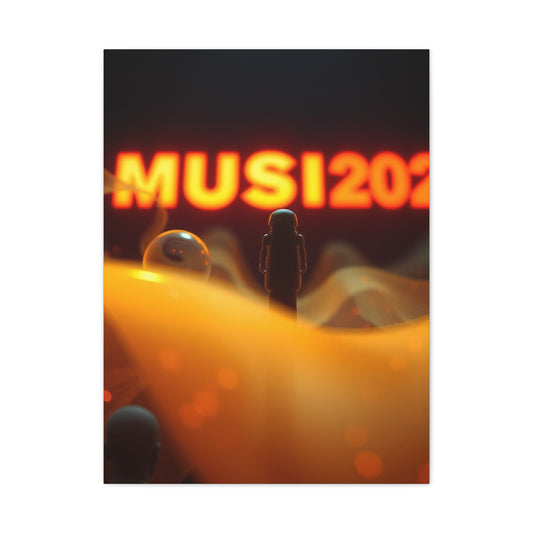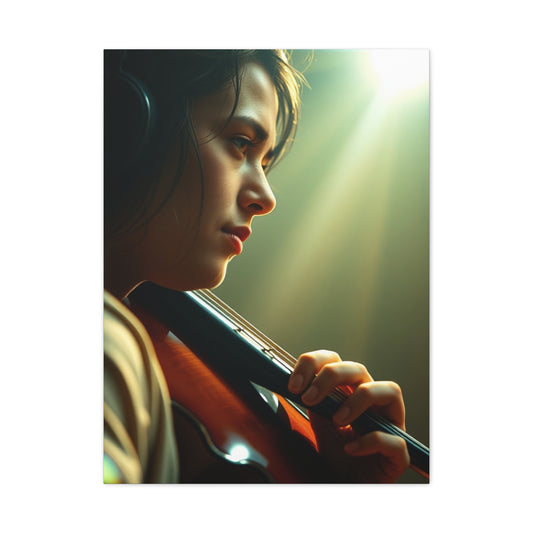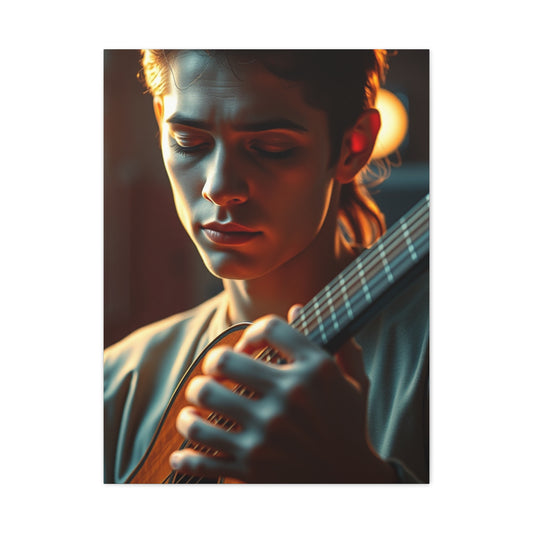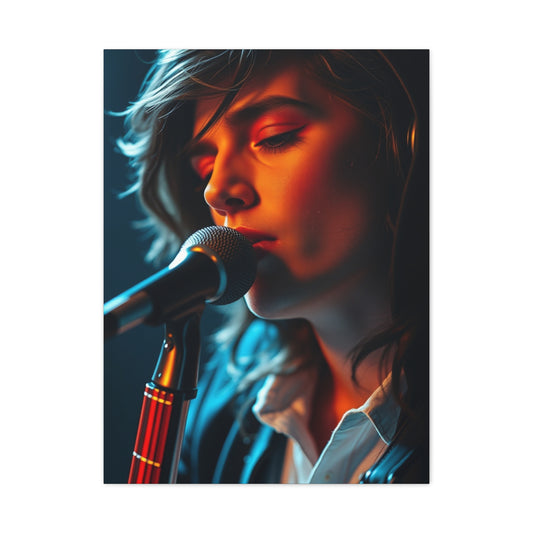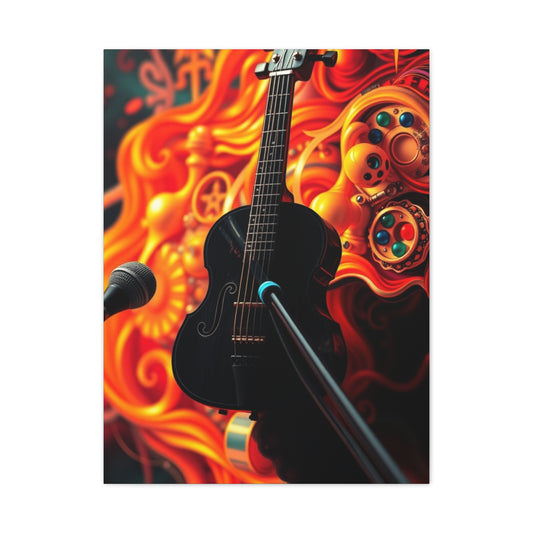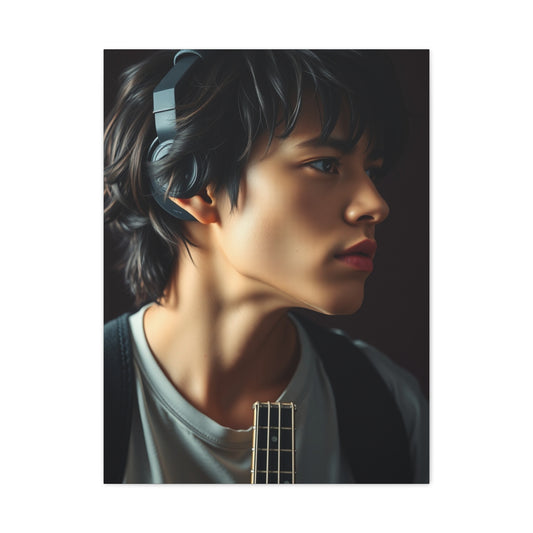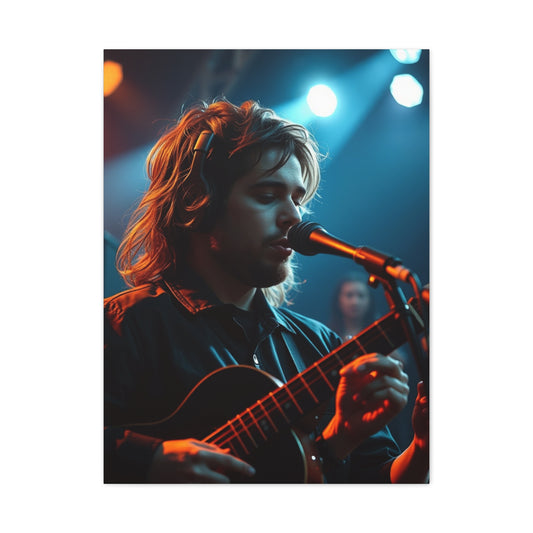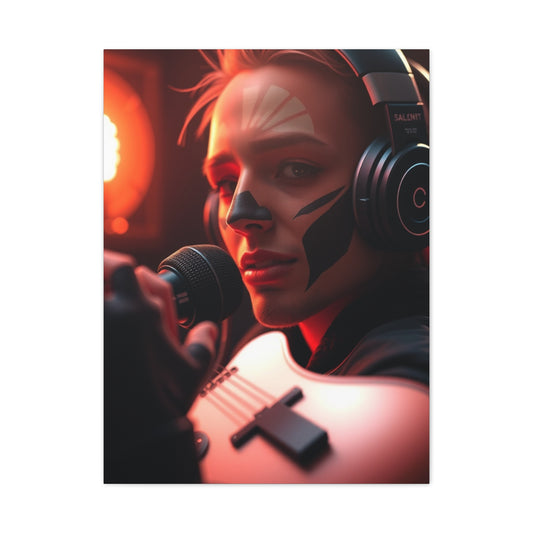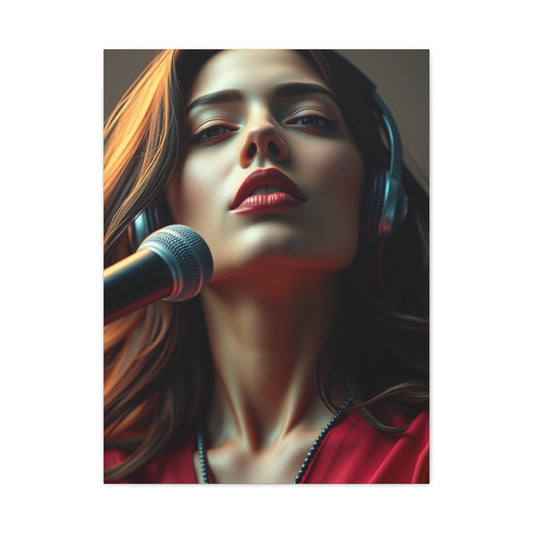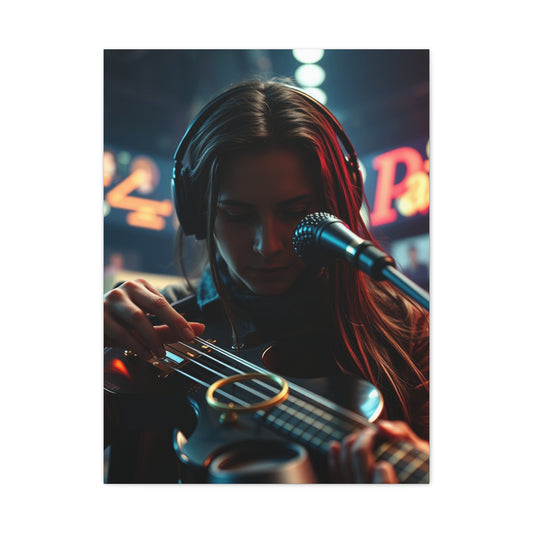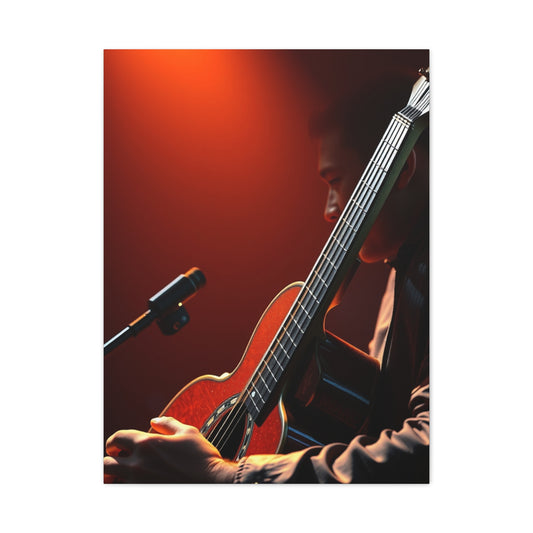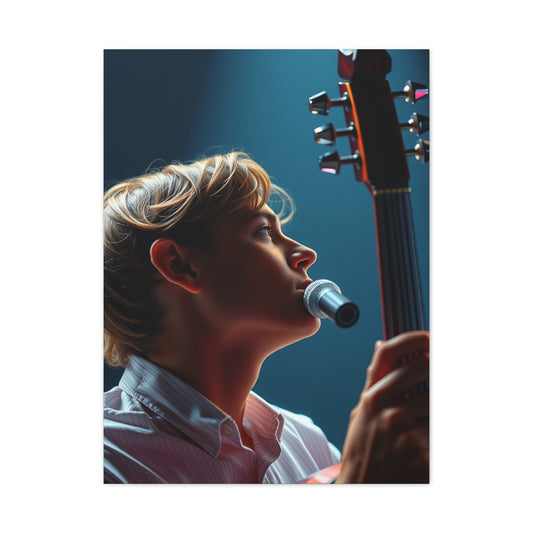Transforming Walls with Creative Music Wall Art Accents
The world of interior design has always found inspiration in art, culture, and the passions of individuals. For music lovers, one of the most rewarding ways to personalize a living space is through music wall decor. Walls that might otherwise remain bare or uninspired can be transformed into vibrant canvases that echo melodies, harmonies, and lyrical sentiments. Music is more than just an auditory experience; it is a language of emotions, memories, and cultural identity. By integrating music wall decor into a home or workspace, you create a sanctuary that not only pleases the eye but also nourishes the soul.
Music-themed interiors are not limited to posters or framed album covers anymore. Today’s possibilities stretch from vinyl record displays and three-dimensional instrument hangings to abstract sound wave art and personalized murals. The concept goes far beyond mere decoration—it becomes a narrative, a story woven from rhythms, textures, and visual symphonies that speak directly to the inhabitants and visitors alike. For someone who views music as a cornerstone of life, music wall decor is both an aesthetic pursuit and a personal declaration of love for melodies.
Historical Background
The use of music as a decorative motif is deeply rooted in human history. Ancient civilizations often merged visual and auditory art forms to create immersive experiences. In the frescoes of ancient Greece and Rome, musical instruments such as lyres, flutes, and harps appeared as decorative elements on the walls of villas, temples, and performance spaces. These images were not just ornamental; they symbolized the harmony of the cosmos, the balance of mind and body, and the celebration of culture.
During the medieval period, sacred music played a central role in European life, and this influence extended to visual art. Manuscript illuminations frequently displayed musical notations in vibrant colors, and some churches painted murals of angels holding harps and trumpets on their walls. By the Renaissance, the appreciation for both music and fine art had grown intertwined, leading to spaces where walls became canvases for musical symbolism, from cherubs playing violins to allegorical figures surrounded by instruments.
In the modern era, the relationship between music and wall art took new forms. The 20th century, marked by the rise of jazz, rock, and pop culture, introduced posters, album covers, and concert photography as popular wall decorations. Vinyl records themselves became not just tools for listening but iconic objects to display proudly on walls. With the digital revolution, new expressions like sound wave art and typography-based lyrics emerged as contemporary design trends. This historical evolution highlights the enduring bond between music and visual aesthetics, reminding us that music wall decor is not merely a fad but an age-old tradition reimagined for new generations.
Core Concepts and Foundations
At its core, music wall decor is about turning abstract sound into tangible visuals. Music is intangible, invisible, and fleeting, yet its emotional impact lingers. Wall art inspired by music seeks to capture that fleeting essence and freeze it in time. The foundation of this concept lies in symbolism, nostalgia, creativity, and personalization.
Symbolism plays a vital role. Instruments signify creativity and craftsmanship, while sheet music conveys precision and artistry. Even abstract art based on musical notes can evoke rhythm and movement, offering a sense of continuity across a room. Nostalgia is another cornerstone, as many forms of music wall decor—such as framed records or concert posters—bring back personal memories of favorite performances, beloved artists, or meaningful life stages.
Personalization remains central. A wall can be decorated with general music-themed art, but when the pieces represent your favorite bands, genres, or personal creations, the space becomes uniquely yours. Creativity, meanwhile, expands the boundaries of how music is represented visually. It allows experimentation with materials, colors, and textures to match the surrounding interior style—be it modern, rustic, eclectic, or minimalist.
The foundation of successful music wall decor also lies in balance. Overcrowding a wall with too many items can diminish the impact, while sparseness may leave the theme unrecognizable. Curating the right mix of framed pieces, three-dimensional elements, and open spaces is essential to making the wall feel intentional rather than cluttered.
Types and Categories
Music wall decor can be explored through diverse categories that suit different personalities, tastes, and spaces. Each type brings its own flair, offering multiple avenues for musical expression.
One popular category is framed vinyl records. Collectors often see vinyl as treasures, and hanging them on walls serves dual purposes: celebrating retro charm and showcasing personal taste. Frames designed specifically for records allow easy swapping when you wish to highlight different albums. These displays often double as conversation starters, instantly revealing your musical leanings.
Another category is typographic art. Musical quotes, song lyrics, or even fragments of sheet music can be transformed into wall decor through creative typography. This style often resonates with those who value lyrical depth or inspirational messages. It allows a blend of modern design aesthetics with personal resonance.
Three-dimensional musical instruments represent a dynamic category. Acoustic guitars, violins, or even brass instruments can be mounted on walls to act as sculptural decor. For those who play, these instruments may serve both as functional tools and decorative accents. This category often infuses the room with authenticity, reminding guests that music here is lived, not just admired.
Abstract music-themed art offers another pathway. Paintings and prints inspired by sound waves, rhythm, and tonal patterns provide modernistic and interpretive designs. These works can range from minimalist black-and-white depictions to vibrant, chaotic color explosions. For lovers of abstract expression, this category allows music to be visualized in innovative, less literal forms.
Concert memorabilia, such as posters, tickets, or signed photographs, form a nostalgic and highly personal category. These items often radiate memories of live performances, evoking the thrill of standing in a crowd or the magic of hearing a beloved song live. Framing such artifacts elevates them from casual souvenirs to cherished art pieces.
DIY creations form the final significant category. Painting a mural, creating shelves shaped like musical notes, or digitally designing sound wave prints provides an outlet for personal artistic expression. Such projects are not only cost-effective but also highly rewarding, as they merge personal creativity with enduring wall decor.
Practical Applications
Incorporating music wall decor into a living space goes beyond aesthetics; it shapes the ambiance and functionality of the environment. For example, in a living room, a gallery wall combining framed vinyl records, concert posters, and sound wave art can serve as the focal point, creating an atmosphere of conviviality and artistic flair. Visitors immediately sense the host’s musical inclinations, sparking conversations and connections.
In bedrooms, musical quotes or calming imagery of instruments can cultivate an environment of relaxation and inspiration. A wall above the bed featuring lyrics from a favorite ballad or a minimalist sketch of a piano can make the room feel deeply personal, merging serenity with creativity.
Workspaces also benefit from music wall decor. Inspirational quotes drawn from favorite songs or framed sheets of classical compositions can boost motivation, spark innovation, and make long hours feel less monotonous. For musicians, studios almost demand walls adorned with instruments, shelves of albums, and sound wave visuals to ignite creativity.
Practical applications are not limited to homes. Cafes, restaurants, and bars frequently incorporate music wall art to reinforce brand identity and mood. A jazz café might use trumpet silhouettes and framed record covers, while a modern lounge could display neon musical quotes or abstract sound patterns. Educational institutions, particularly music schools, often use wall art depicting notes, instruments, or famous composers to inspire students.
Functional elements can also blend seamlessly into decor. Shelves shaped like treble clefs can hold books, while guitars hung on walls not only decorate but also remain accessible for playing. Technology, too, offers innovative applications. Digital picture frames that rotate between concert photos or interactive panels displaying sound waves bring music wall decor into the realm of smart homes.
By carefully applying these concepts, music wall decor does more than beautify—it transforms the atmosphere, evokes emotions, and creates spaces where the spirit of music feels alive.
Techniques and Methods
Designing with music wall decor requires more than just hanging a poster or frame. It involves techniques that ensure harmony, proportion, and intentionality in the overall space. A thoughtfully executed wall can feel like a curated exhibition rather than a random assembly of items. One foundational method is layering. Instead of displaying a single flat item, consider combining different dimensions, such as placing framed sheet music behind a mounted guitar or layering lyrical typography above textured backdrops. This creates depth, transforming the wall into an engaging visual landscape.
Symmetry and asymmetry both play a role in technique. A symmetrical arrangement of vinyl records framed in identical cases can provide a clean, orderly aesthetic, while asymmetrical placements of instruments or posters can evoke movement and spontaneity. Each choice depends on the personality of the room and the person decorating it. Another important method is scaling. Large-scale murals or oversized sound wave art make bold statements, while smaller framed pieces work best in clusters or grid formations. The interplay of scale defines whether the wall becomes a dominant centerpiece or a subtle accent.
Lighting techniques add a layer of artistry. Using track lights or wall-mounted sconces can highlight certain pieces, such as a signed concert poster or a rare record, while ambient lighting like LED strips behind instruments can give the display a modern glow. For murals, using light to wash across textured paint creates shadow play that enhances the sense of rhythm in the imagery.
Materials also influence technique. Wood frames convey warmth and nostalgia, metal frames provide a sleek industrial edge, and canvas textures create a painterly aura. For instruments mounted on the wall, secure brackets are essential, but creative backdrops, such as reclaimed wood panels or patterned wallpaper, can enrich the presentation. Even methods such as stenciling or decal layering require attention to detail, ensuring clean lines and balanced compositions.
DIY approaches demand patience and creativity. Hand-painting sound waves or freehand drawing sheet music requires both technical skill and artistic confidence, while digital techniques like printing custom artwork from design software open new doors for personalization. Each method, whether artisanal or technological, contributes to shaping an environment where music and art become indistinguishable.
Challenges and Common Mistakes
While music wall decor offers endless possibilities, it also comes with pitfalls that can diminish its impact. One of the most common challenges is overcrowding. Enthusiastic collectors often wish to display every poster, album, or photograph they own, but without careful curation, the wall risks becoming cluttered and incoherent. A focused selection of meaningful items always speaks louder than an indiscriminate collection.
Another frequent mistake is neglecting proportion. Hanging a small framed lyric on an expansive wall may leave the space looking incomplete, while placing an oversized mural in a tiny room can feel overwhelming. Balance must be achieved between the scale of the wall and the size of the decorative elements.
Color coordination also presents challenges. A bright neon poster may clash with earthy-toned furniture, or a wall filled with black-and-white photographs may feel visually flat if not balanced with subtle pops of color. Maintaining a consistent palette, or deliberately choosing contrasting colors with intention, avoids visual discord.
Improper installation is another hazard. Instruments not mounted securely can be damaged or even cause accidents. Frames hung at uneven heights can look sloppy, detracting from the otherwise powerful message of the wall. Using appropriate hardware, measuring spacing carefully, and ensuring stability are vital technical steps.
Overreliance on clichés can weaken impact. For example, while sheet music prints are beautiful, displaying them without variation may feel predictable. Pairing them with abstract sound art or integrating them into a broader thematic design prevents monotony. Similarly, generic mass-produced posters may not carry the same resonance as personalized or unique works, leading to a wall that feels impersonal.
Budget constraints also pose challenges. High-quality frames, professional murals, or authentic signed memorabilia can be costly, tempting decorators to compromise with low-quality reproductions. The solution lies in blending investment pieces with DIY creations, ensuring authenticity while managing costs. Finally, one subtle but pervasive mistake is ignoring the existing interior context. A wall that radiates music may still feel disconnected if the surrounding furniture, lighting, and color scheme do not echo its spirit. Integration with the broader room design ensures a cohesive and immersive environment.
Trends and Future Outlook
Music wall decor, like music itself, evolves with cultural and technological shifts. Current trends reflect a blending of tradition with innovation. One emerging trend is digital integration. Interactive panels that display shifting sound wave art or QR codes embedded into artwork that link to playlists allow music wall decor to extend beyond static imagery. Homes equipped with smart technology increasingly blend visual art with immersive soundscapes, making walls come alive with both image and sound.
Minimalism is another growing trend. Instead of overwhelming walls with multiple objects, many choose a single striking piece, such as a massive abstract sound wave or a sleek floating guitar mount illuminated with LED accents. This trend reflects a broader cultural movement toward intentional simplicity, where each piece must justify its place.
Sustainability is shaping future directions as well. Eco-friendly materials, recycled wood for frames, or handmade art crafted from upcycled records resonate with audiences seeking ethical design choices. This reflects not only aesthetic sensibilities but also environmental consciousness.
The revival of analog culture is another powerful influence. Vinyl records, once considered obsolete, are experiencing a renaissance. Framed records, retro posters, and nostalgic references to golden eras of music dominate many contemporary interiors. This trend blends past and present, offering timeless appeal.
Personalization continues to drive demand. Digital printing technologies now allow individuals to create custom sound wave art from their own recordings, whether a wedding song, a child’s laughter, or a beloved track. This deeply personal approach ensures that walls tell intimate stories rather than generic narratives.
Looking to the future, augmented reality promises to revolutionize music wall decor. Imagine pointing a device at a mural and seeing it animate into a virtual concert, or scanning a framed lyric that plays the actual song. Such innovations could transform static decor into interactive storytelling experiences. As boundaries between physical and digital blur, the future of music-inspired walls is one of boundless creativity.
Expert Insights
Designers, musicians, and art curators often share wisdom about the power and nuance of music wall decor. Interior designers emphasize the importance of storytelling. A successful wall, they argue, is not merely decorative but narrational. Every piece should contribute to a larger story about the inhabitant’s relationship with music. This could mean combining family heirloom instruments with modern digital art, weaving a narrative that spans generations.
Musicians frequently highlight authenticity. To them, music wall decor is not about trend-following but about sincerity. Displaying instruments one actually plays, or framing lyrics that hold personal meaning, creates emotional resonance far beyond surface-level aesthetics. They encourage decorators to avoid mimicking magazine spreads and instead embrace the imperfect, personal details that reflect real life.
Art curators bring another layer of expertise. They stress the importance of balance and curation. Just as a gallery exhibition must be carefully arranged to guide the viewer’s eye, a wall filled with music-inspired elements must direct attention deliberately. Negative space, lighting, and material contrasts are as crucial as the art itself.
Educators in the field of music also share valuable perspectives. They suggest incorporating educational elements, such as framed notations of famous symphonies, portraits of iconic composers, or diagrams of instruments. Such decor not only beautifies but also inspires curiosity and learning, particularly in homes with children or in classrooms.
Psychologists and cultural critics add yet another voice, observing how music wall decor can affect mood and identity. A wall decorated with vibrant concert posters might energize and uplift, while a minimalist black-and-white sound wave might promote calmness and reflection. They remind us that walls shape not just spaces but experiences, influencing how we feel and interact within a room.
From these insights, one message emerges clearly: music wall decor is not simply about filling empty spaces. It is about creating resonance, authenticity, and meaning. It is a practice that sits at the crossroads of design, emotion, and identity, where each wall becomes a stage for personal expression.
Emerging Trends in Wall Art
The world of music wall decor has entered an era of extraordinary experimentation, where creativity converges with technology, sustainability, and cultural storytelling. Emerging trends reveal a fascinating blend of nostalgia and futurism, with decorators and homeowners seeking not only to beautify their walls but also to create atmospheres that echo their passions and values. One prominent trend is personalization through technology. Sound wave prints created from personal recordings are steadily becoming a staple in modern interiors. These visualizations transform a fleeting moment—such as a first dance, a cherished lullaby, or a favorite verse—into a timeless artifact, frozen on the wall like a memory etched in color and form.
Another rising trend is experiential art. Walls are no longer treated as static boundaries but as immersive environments. Interactive murals, augmented reality posters, and projection-based displays allow individuals to engage with their wall art in dynamic ways. A mural painted with luminous paint may glow under black light, creating dual personalities for the same artwork depending on the time of day. Projection art synchronized with ambient music can alter the mood of a room, blurring the line between decor and performance.
Sustainability also shapes emerging trends. As society grows increasingly conscious of ecological responsibility, many decorators seek music wall decor created from reclaimed wood, recycled metals, or upcycled vinyl records. Artists are finding ingenious ways to breathe new life into discarded items, transforming what would have been waste into evocative art pieces with both aesthetic and ethical value.
Minimalism remains influential, yet it has evolved beyond stark simplicity. Modern minimalist trends often incorporate subtle references to music, such as a lone metallic treble clef sculpture mounted against a neutral wall or a singular oversized record displayed as a centerpiece. These approaches maintain serenity while still affirming a strong thematic identity.
Meanwhile, maximalist trends flourish in parallel. For some, walls serve as visual symphonies of memorabilia, layered with framed lyrics, instruments, posters, and custom artwork. The maximalist approach mirrors the energy of a live concert, where vibrancy, diversity, and intensity collide in visual harmony.
Cultural fusion is another captivating movement. Decorators now seek wall art that incorporates motifs from global musical traditions, such as African drum patterns, Indian sitar imagery, or Latin American dance-inspired murals. This reflects a growing appetite for inclusivity, storytelling, and the celebration of global musical heritage.
Step-by-Step Guides
Step 1: Define Your Theme
Before placing anything on a wall, it is crucial to establish a guiding theme. This step involves introspection about your relationship with music. Do you want the wall to express nostalgia for a particular era, such as jazz clubs of the 1920s or rock concerts of the 1970s? Or perhaps you wish to convey personal creativity through DIY murals and handmade designs? Clarity in theme ensures that every item contributes to a coherent narrative. Without this step, walls risk becoming disorganized collections without emotional resonance.
Step 2: Select the Wall
Not every wall in a room is equally suitable for music wall decor. Identifying the right canvas is essential. The wall behind a sofa or above a bed often serves as a natural focal point. In smaller spaces, even a hallway or entryway can become a dramatic showcase. Consider lighting, visibility, and traffic flow when choosing the ideal location. A well-placed wall ensures that the decor enhances not just the wall itself but the entire spatial atmosphere.
Step 3: Curate Your Pieces
Curating is more than selecting beautiful objects—it is about weaving a story. At this stage, gather your chosen records, posters, framed lyrics, sound wave art, or instruments. Ask yourself whether each piece holds personal significance and whether it resonates with the established theme. If aiming for a minimalist style, choose one or two powerful items. For eclectic or maximalist expressions, select diverse elements that still maintain cohesion through color palette, framing style, or scale.
Step 4: Plan the Layout
A layout should be envisioned before installation begins. Lay pieces on the floor to experiment with arrangements. Symmetry works well for formal and classic interiors, while asymmetry suggests playfulness and spontaneity. Gallery walls benefit from consistent spacing, while eclectic designs thrive on deliberate irregularity. Visual balance must always be considered, ensuring that no single section feels heavier or emptier than the rest.
Step 5: Incorporate Textures and Layers
Texture is a powerful design element that often goes overlooked. Combining smooth glass frames with raw wood panels or metallic instruments creates dynamic contrasts. Layers add depth: a guitar mounted above a patterned backdrop feels more dimensional than a guitar on a blank wall. Mixing media—canvas, vinyl, metal, and wood—can transform a simple collection into a vibrant composition full of character.
Step 6: Integrate Lighting
Lighting enhances mood and draws attention to focal points. Consider wall-mounted sconces for dramatic highlights, or subtle LED backlighting to create a contemporary effect. Spotlights can emphasize important elements such as autographed posters, while ambient lighting can wash across murals, enhancing color and shadow. The right lighting can elevate even the simplest decor into a striking centerpiece.
Step 7: Install with Care
Practical considerations are as important as artistic ones. Use sturdy mounts for instruments, secure frames with reliable hardware, and measure meticulously before drilling. Crooked frames or unstable mounts not only disrupt visual harmony but also risk damaging valuable pieces. This step requires patience and precision, ensuring that the wall reflects both artistry and craftsmanship.
Step 8: Add Personal Touches
The most memorable music walls are those infused with individuality. This could mean incorporating a family heirloom instrument, displaying tickets from a memorable concert, or painting your own abstract interpretation of a favorite song. Such touches transform the wall from generic decor into an intimate portrait of passion.
Step 9: Evaluate and Refine
Once the wall is complete, step back and evaluate. Does it communicate the intended theme? Is the balance effective? Refinement may involve repositioning certain items, adding new elements, or removing pieces that feel out of place. A decor project is not static but evolves with time, just as musical tastes and life experiences evolve.
Step 10: Maintain and Refresh
Finally, maintaining your music wall ensures its longevity. Dust frames regularly, polish instruments, and replace fading prints. Refresh the wall periodically by swapping posters, updating sound wave prints, or rearranging the layout. This keeps the wall alive, mirroring the ever-changing nature of music itself.
Emerging trends reveal that music wall decor is no longer limited to static posters or framed instruments. It is a living, breathing form of artistic self-expression shaped by technology, sustainability, and cultural diversity. Through a thoughtful step-by-step process, anyone can transform a blank wall into a gallery of rhythm, melody, and memory. The techniques of curating, layering, lighting, and personalizing elevate ordinary decor into a powerful medium of storytelling. Whether through minimalist restraint or maximalist exuberance, each wall becomes a stage where music finds new life, resonating beyond sound into sight, texture, and feeling.
Advanced Design Inspirations
Once the foundational techniques are mastered and once trends are understood, the exploration of advanced design inspirations elevates music wall decor into the realm of artistry and innovation. At this level, a wall is not merely a backdrop for familiar symbols like records or posters, but rather a canvas that communicates layered meanings, cultural depth, and emotional nuance.
One advanced approach is the integration of mixed media installations. Combining sculpture, painting, digital screens, and even live plants around musical motifs creates a wall that transcends singular categories. Imagine a wall where a mounted violin is surrounded by abstract painted swirls representing its sound, with small embedded screens playing silent clips of performances. Such a composition transforms decor into narrative, merging tactile elements with technological expression.
Another sophisticated inspiration lies in synesthetic design, where colors and shapes are deliberately chosen to evoke the sensations of particular sounds or genres. Blues and purples might dominate a wall inspired by jazz, with flowing lines mimicking saxophone improvisations, while sharp contrasts of red and black could frame imagery of rock and roll. This approach requires a deep sensitivity to the relationships between sound and sight, crafting an environment where the wall vibrates with invisible rhythm.
Layered symbolism enriches advanced designs. A wall could depict not only instruments but also cultural references associated with them. For example, a guitar could be surrounded by desert imagery evoking flamenco traditions, or a drum installation might include tribal patterns that reference its ancestral roots. These subtle inclusions transform decor into cultural storytelling, extending beyond aesthetic pleasure into heritage and history.
Spatial integration also defines advanced design. Instead of treating the wall as isolated, consider how it interacts with the furniture, floor, and ceiling. A mural of cascading notes might appear to flow from ceiling to floor, enveloping the entire room in rhythm. A mounted instrument could connect visually with a rug patterned in similar motifs, creating continuity across dimensions. In this way, the wall becomes not an isolated panel but part of a larger symphonic space.
Finally, advanced designs often embrace theatricality. A music wall can be treated like a stage, complete with spotlighting, curtains, and a central object of focus, such as a grand record display or illuminated sound sculpture. This transforms the living space into a personal concert hall, where everyday life unfolds against a backdrop of artistic spectacle.
Personalization Beyond Aesthetics
While personalization has always been integral to music-inspired decor, advanced stages push it into deeper territory where meaning becomes paramount. Beyond selecting favorite posters or albums, personalization may involve embedding fragments of personal history into the wall. For instance, handwritten lyrics composed by the decorator or photographs from personal performances can serve as anchors around which other elements revolve.
Incorporating heirloom instruments or artifacts adds layers of emotional gravity. A grandfather’s harmonica mounted on the wall or an old family photograph of a dance recital infuses the wall with personal heritage, making the decor less about trend and more about timeless legacy. Similarly, integrating milestones, such as framing the sheet music of the song played at a wedding or creating sound wave art from a child’s first spoken words, elevates the wall into a family archive as much as an artistic endeavor.
Personalization can also emerge from reinterpretation. Instead of displaying conventional art, decorators may commission custom pieces that reimagine their favorite songs visually. An artist might paint an abstract inspired by a particular symphony, allowing the decorator to experience their beloved composition in a new sensory form. These bespoke touches ensure that no other wall in the world mirrors the same story, amplifying the uniqueness of the space.
Emotional and Psychological Dimensions
A music wall is more than an ornament; it becomes a psychological instrument, influencing mood and identity. Studies in environmental psychology reveal that visual surroundings deeply affect human emotions. A wall dominated by bright concert posters and neon signage often stimulates energy and sociability, making it perfect for common areas where gatherings occur. In contrast, a wall with minimalist black-and-white notes or subtle instrument silhouettes tends to promote calmness, ideal for bedrooms or reflective workspaces.
Personal walls also contribute to identity formation. Guests entering a home often read walls as unspoken introductions, and a music wall communicates personality more vividly than many verbal explanations. Someone with carefully curated jazz memorabilia reveals sophistication and nostalgia, while another showcasing vibrant rock posters expresses dynamism and rebellious spirit. This symbolic communication turns walls into autobiographical statements, declaring not only aesthetic taste but also worldview.
Music wall decor can also function therapeutically. For those recovering from stress or grief, surrounding themselves with imagery of comforting songs or instruments can act as a silent companion. A framed lullaby notation or mural of flowing sound waves may provide serenity during difficult times. Thus, beyond embellishment, the decor performs an emotional role, becoming an anchor for memory, healing, and joy.
Cultural and Global Influences
In today’s interconnected world, music wall decor increasingly reflects cultural diversity and global heritage. Many decorators seek inspiration from traditional musical imagery that celebrates global traditions, weaving a tapestry of cultural unity. For instance, African djembe drums painted on walls or Indian sitar silhouettes bring exotic resonances into interiors, reminding viewers of the universal nature of rhythm.
Latin American influences bring vibrancy, with murals inspired by salsa and tango offering fiery energy. East Asian aesthetics, such as minimalist ink paintings of flutes or drums, emphasize subtlety and balance. By integrating such diverse influences, walls become bridges across continents, telling stories of music’s role as a universal human language.
Cultural influences also appear in the blending of past and present. Retro imagery from iconic decades—the psychedelic posters of the 1960s, disco motifs of the 1970s, or hip-hop graffiti of the 1990s—are often combined with contemporary digital art, creating cross-generational dialogue. These juxtapositions ensure that walls reflect not only personal taste but also broader cultural evolution.
Innovative Applications in Public and Commercial Spaces
Beyond private homes, music wall decor is thriving in public and commercial environments. Restaurants and cafes often use it to define ambiance, with jazz clubs painting trumpet murals and coffee shops framing vinyl collections. These choices communicate brand identity while also enriching customer experience.
In offices, particularly in creative industries, music wall art provides stimulation and fosters innovation. Meeting rooms adorned with sound wave patterns or lyrical typography inspire brainstorming and collaboration. For schools and universities, especially those with music programs, wall decor educates as much as it inspires. Murals of composers, historical instruments, or theoretical diagrams bring learning to life.
Even healthcare settings have begun to explore the therapeutic potential of music wall art. Hospitals and clinics sometimes use murals of calming instruments or abstract representations of soothing sounds to create tranquil environments for patients. This demonstrates the growing recognition of decor not merely as aesthetic but as an active participant in wellbeing.
Future Directions of Music Wall Decor
As technology continues to advance, the future of music wall decor is likely to move toward greater interactivity and personalization. Augmented reality is poised to become transformative, enabling walls to come alive when viewed through devices. A static poster could suddenly animate into a live concert performance, or a mural might reveal hidden layers of visual storytelling when scanned.
Artificial intelligence could also play a role in custom design, generating personalized wall art based on an individual’s favorite playlists or listening history. These AI-generated visuals could evolve dynamically, shifting over time as musical tastes develop. Similarly, holographic projections may allow instruments or notes to appear as three-dimensional visuals, floating across walls in ways previously unimaginable.
Sustainability will remain a defining principle, with designers exploring biodegradable materials, renewable resources, and zero-waste practices. Future walls may not only echo melodies but also resonate with ecological consciousness, aligning artistry with responsibility.
In addition, communal participation may grow. Walls could be treated as collaborative canvases, where groups of friends, families, or communities collectively add elements—lyrics, images, or signatures—forming living murals that reflect shared musical journeys. This democratization of design emphasizes that music is not an isolated art form but a collective experience, and walls may increasingly embody that ethos.
Conclusion
Music wall decor is more than decoration; it is an articulation of self, culture, and imagination. From its historical roots in ancient murals and illuminated manuscripts to its modern incarnations through vinyl displays, digital art, and interactive technology, the practice has always reflected humanity’s desire to translate sound into sight.
The journey of transforming a blank wall into a symphony of imagery begins with careful planning—choosing themes, curating objects, and arranging them with balance. It deepens through advanced techniques like layering textures, incorporating cultural symbols, and integrating lighting. It expands through trends that emphasize personalization, sustainability, and technological innovation. Ultimately, it culminates in creations that are both personal and universal, unique to their creators yet resonant with the timeless spirit of music.
Music wall decor thrives at the crossroads of art, memory, and identity. It invites us to celebrate the songs that shaped our lives, to honor the instruments that carried those melodies, and to transform the silent surfaces around us into vibrant reflections of rhythm. In doing so, we affirm that music is not confined to the ears alone but extends to the eyes, the heart, and the spaces we inhabit.
Every decorated wall becomes an echo chamber of passion, narrating stories of nostalgia, aspiration, and cultural connection. As trends evolve and technologies advance, the possibilities for expression will only grow more boundless. Yet the essence remains constant: music wall decor is a visual symphony, a bridge between art and sound, and an enduring testament to the universal human need to harmonize beauty with meaning.

